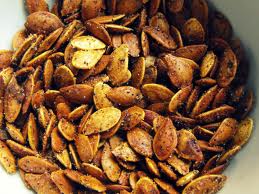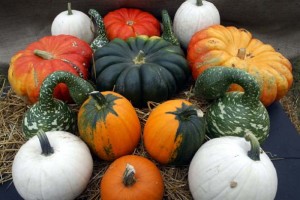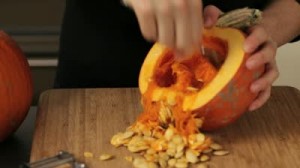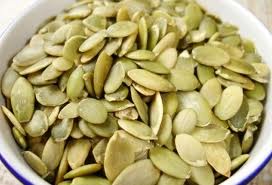The season is upon us now where Pumpkins are a plenty! I couldn’t get a total count, seems there might be over 50 varieties of pumpkins that can be grown in your own garden from heirloom seeds. Within that variety are some amazing differences:
- The most commonly known carving pumpkin, the Jack-O-Lantern, was not bred for eating.
- The Smaller sweeter pumpkins are for eating.
- Colors of pumpkins are just as diverse, such as the blue Jarrahdale from New Zealand and Queensland Blues from Australia.
- Pumpkins are considered a fruit because it contains seeds.
- Pumpkin can be used for soups, stews, bread, pickles, pies, puddings, ice cream, and even beer or ale!
- You can even preserve pumpkin by canning (most advice is only as cubed, not mashed.)
- Cattle, goats, pigs, chickens and turkeys all love pumpkins.
Here are some interesting facts about pumpkin seeds:
- Most pumpkin seeds have hulls, unlike the Kakai Pumpkin seeds are completely hull-less.
- Mexican mole sauce is made with pumpkin seeds.
Health Benefits of Pumpkin Seeds:
- Contain lots of minerals such as zinc, iron, copper, magnesium, phosphorus, and manganese… for helping to optimize bone health and preventing osteoporosis.
- Good source of B vitamins, Vitamin E, Vitamin K
- They have been shown to reduce LDL cholesterol, improve prostate health, reduce inflammation related to arthritis, improve sleep and lower depression.
- The only alkaline forming seed.
- Contain high quality protein, and the content of protein actually increases with the age of the fruit.
Preparation and Use of Pumpkin Seeds:
- Best to shell the seeds, then soak in water for 6 hours. Soaking make enzymes and other nutrients more digestible.
- Bake them in the oven at 160 to 170°F for 15 to 20 minutes. You can even sprinkle different seasonings on them for a variety of flavors.
- Many suggest dehydrating below 110 degrees F, will prevent of loss of nutritive value from over-heating.
- Sprinkle them on top of salads, cereals, and yogurt.
- Add them to soups, stews, and meatloaf.
- Enjoy them raw as a snack!




